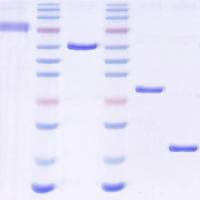Surface Plasmon Resonance Analysis of Interactions Between Replicase Proteins of Tomato Bushy Stunt Virus
互联网
互联网
相关产品推荐

Tomato bushy stunt virus ORF2 重组蛋白表达
¥2000

Recombinant-Pseudomonas-syringae-pv-tomato-Cobalamin-synthasecobSCobalamin synthase EC= 2.-.-.-
¥10934

yscM/yscM蛋白/yscM; Yop proteins translocation protein M蛋白/Recombinant Yersinia enterocolitica Yop proteins translocation protein M (yscM)重组蛋白
¥69

p46/p46蛋白Recombinant Mesomycoplasma hyopneumoniae 46 kDa surface antigen (p46)重组蛋白p46蛋白
¥2616

rep/rep蛋白Recombinant S_e_v_ere a_c_u_te r_e_s_piratory s_y_n_drome c_o_r_onavirus 2 Replicase polyprotein 1ab (rep)重组蛋白pp1ab蛋白
¥3168
相关问答

